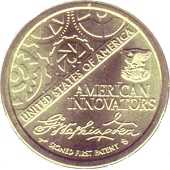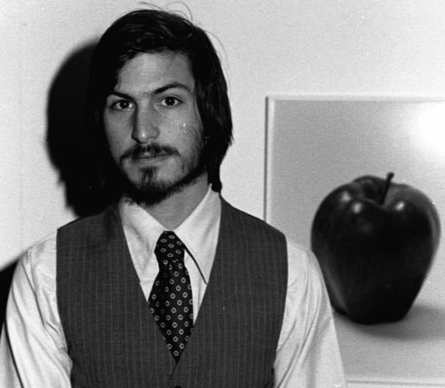| Steve Jobs and the Early Apple Years |
Page 3 of 3
The company was now large enough to spin off self contained product development groups. Steve took control of the group producing the Apple III and tried to design the external appearance and performance targets for the machine. His abrasive style of working rubbed most people up the wrong way and the project was doomed from the start. He believed he had a magic touch and this combined with his arrogance and ignorance made it impossible for the project to succeed. Steve was removed from the project. He searched for something else to champion. He was convinced that computers should be personal and there was a stage beyond the Apple II or III - he started the Lisa project without much idea of how to achieve his goals.
Lisa To cut a long story short the solution came in the form of a visit to the Xerox labs where he and the Lisa team saw the prototype Xerox Star complete with windows, icons and a mouse. The Apple team and Steve immediately understood what they were looking at and knew that it was the future of computing. The trick would be to do it cheap. Unfortunately the Lisa project was turning out to be a repeat of the Apple III and again Steve was removed from control.
The Xerox star The next stage was almost an orchestrated repeat of the development of the Apple II. Steve gathered around himself a team of talented people who were also able to work for him. They were the pirates and Apple was the Navy. They designed what at first looked like a low cost version of the Lisa but in fact it was another machine altogether. Based on the 68000 it had a single printed circuit board and Steve insisted that it should occupy no more desk space than a telephone directory. He also coupled the development with Postscript and the laser printer. When the Mac was introduced the Lisa was destroyed as a credible machine. It wasn't compatible with the Mac and it was more expensive. Now Apple had two failures to their credit - the Apple III and Lisa - and the Mac wasn't the immediate hit that Steve Jobs claimed it would be. In a series of top management rows, meetings plots and counter plots eventually Steve Jobs resigned Apple. His style of management, personality and design just couldn't coexist with a traditional company structure.
The first Mac The Jobs story wasn't over. After leaving Apple in 1985 he founded NExT to design a machine specifically aimed at science and education and in a twist of fate NeXT was bought by Apple in 1997 and he was once again the CEO of the company.
Next For the full story of what happened next see Icon Steve Jobs: The Greatest Second Act in the History of Business, 2005 and for a more up-to-date account see Steve Jobs by Walter Isaacson. Suffice it to say that was during his second term as Apple's CEO that Jobs brought us the iPhone, originally launched in 2007, and we entered the era of the smartphone. In 2003 Jobs was diagnosed with a rare form of pancreatic cancer but initially refused medical intervention, preferring to rely on various alternative medicine options. After 9 months he underwent surgery to remove a tumor. Although this seemed to have been successful, his cancer returned within eighteen months, although this information was shared only by his wife and doctors. Jobs continued to work by his appearances at conference events led people to speculate about his condition. In 2009 he took a six-month leave of absence and underwent a liver transplant. His prognosis was positive but in January 2011 Jobs again took a leave of absence. Despit delivering the WWDC keynote in June by August he announced his resignation as Apple's CEO. He did, however, continue to work for Apple until the day before his death on October 5th, 2011 which was attributed to complications from the pancreatic tumor. Steve Jobs in 2010 with the iPhone 4 Jobs is rightly regarded as pioneering the smartphone revolution that has had a transformational impact on society. His many contributions were recognized in 2022, eleven years after his untimely death with the Presidential Medal of Freedom, which honors individuals who: who have made exemplary contributions to the prosperity, values, or security of the United States, world peace, or other significant societal, public or private endeavors".. The citation for this posthumous award reads: Steve Jobs (d. 2011) was the co-founder, chief executive, and chair of Apple, Inc., CEO of Pixar and held a leading role at the Walt Disney Company. His vision, imagination and creativity led to inventions that have, and continue to, change the way the world communicates, as well as transforming the computer, music, film and wireless industries.
In 2025 Jobs was selected as the person to represent California on the American Innovation $1 Coin. The idea,launched in 2018 by the U.S. Mint, is to highlight ingenuity in the U.S.A with each state, territory, and the District of Columbia creating their own coin to recognize an innovation or innovator from their region, Announcing the nomination says of Jobs, Governor of California, Gavin Newsom, said: "By focusing on who he was innovating for – other people – Jobs was able to use technology to connect people to each other and to the broader world, bringing people onto the same level by providing them with equal access. And that approach was built on a willingness to try new ideas and push the boundaries of what was possible – an approach that embodies the California spirit." Related ArticlesSteve Jobs Honored Posthumously With Presidential Medal of Freedom California Nominates Steve Jobs For American Innovation Coin
<ASIN:1451648537> <ASIN:0471720836> <ASIN:1408832062> <ASIN:0072262338> <ASIN:0887306292> <ASIN:1430210788>
|
|||||||
| Last Updated ( Tuesday, 25 February 2025 ) |








